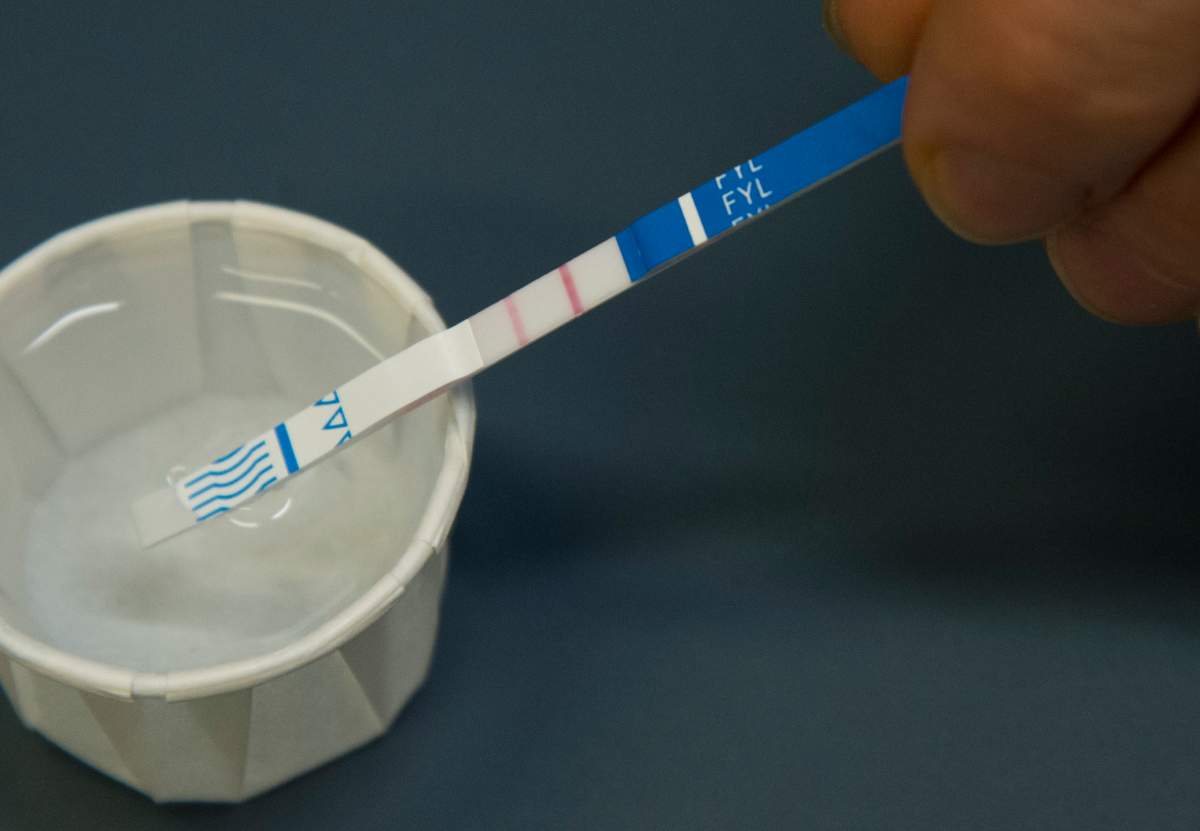It’s no secret that Edmonton’s drug supply is toxic, but it hasn’t always been clear what’s making it that way. A new study sheds some light on what is in this toxic supply, how it’s killing drug users and how a new drug testing site in the city can help save their lives.

The study by Dr. Craig Chatterton, chief toxicologist with the Office of the Chief Medical Examiner, looks at drug concentrations in the blood of people who died of fentanyl poisoning over the last three years — a time when there was a drastic uptick in drug poisoning deaths across the province. This April marked the highest number of drug poisoning deaths ever recorded, over 180. The previous high recorded was 175 in November 2021.
In 10 years, from 2012 to 2022, fentanyl related deaths have gone up 5,000 per cent, according to the study.
The study looked at “benzo-dope” cases — a combination of fentanyl and benzodiazepines (common examples would be Xanax and Valium). Researchers found that the presence of benzos in benzo-dope users exacerbated the potency of the fentanyl in the users system, making it more lethal.
“We’ve always suspected that benzos … which is a depressant, factors into a lot of these overdoses. But when they look at the level of benzodiazepines in the blood stream of these individuals, there at a subtherapeutic level,” explained Dr. Monty Ghosh, associate professor at the University of Alberta and Calgary.
- Carney, Trump and Sheinbaum talk trade in Washington at FIFA World Cup draw
- Industry experts question Saab’s pitch to bring 10,000 jobs to Canada
- Newfoundland girl’s disappearance prompts calls for tougher laws to stop abductions
- CBSA says removals at all-time high, but 10K warrants are over a year old
He said this shows it’s more the fentanyl that’s causing the issues, rather than the benzos, but they also can’t be ignored.

Get weekly health news
Another issue, he said, is that there needs to be more vials in Naloxone kits because more is needed to resuscitate individuals. Naloxone also can’t reverse the effects of benzos, which need to be naturally metabolized to pass through the body, he added.
“We know right now that the drug supply is incredibly tainted — there’s a lot of impurities within the drug supply and these can cause certain effects, especially if they interact with each other,” he said.
Carfentanil, which is much more potent than fentanyl, is making a resurgence right now in Calgary, he said, making drug users at higher risk for having an overdose event. That’s why it’s so important to know what’s making up these “drug cocktails,” he added.
This is where Edmonton’s new drug testing site comes into play. These sites are rare — B.C. and Ontario are the only other provinces that have them — but offer another level of drug harm reduction.
Spectrum Drug Testing is part of downtown Edmonton’s Queer & Trans Health Collective. According to their website, the service can be accessed for free by anyone in the community in the afternoons Monday to Friday. The testing is also anonymous and confidential.
Ghosh says understanding what is in the drug supply helps different players manage their response. For users, he recommends trying a lower dosage if they’re starting out on a new drug and not using alone. Clinical practitioners like himself have had to change the withdrawal method they practice with clients who use benzo-dope.
“The other groups that can benefit from this are front-line workers, as well, because it helps us know how best to respond to these opioid overdose cases. So, if we do see a drug poisoning/overdose, we now know that there is a high amount of carfentanil, for example, in the drug supply, so we need to use more Naloxone than we normally would,” he said.
The OCME, however, said in a statement to Global News: “We would not expect the public, or first responders, to draw conclusions, scientific or otherwise, from this study.
“The intention of this study is to provide scientific information that could be of interest to, and beneficial for, the wider toxicology and medical examiner communities.”
— With files from Morgan Black, Global News








Comments